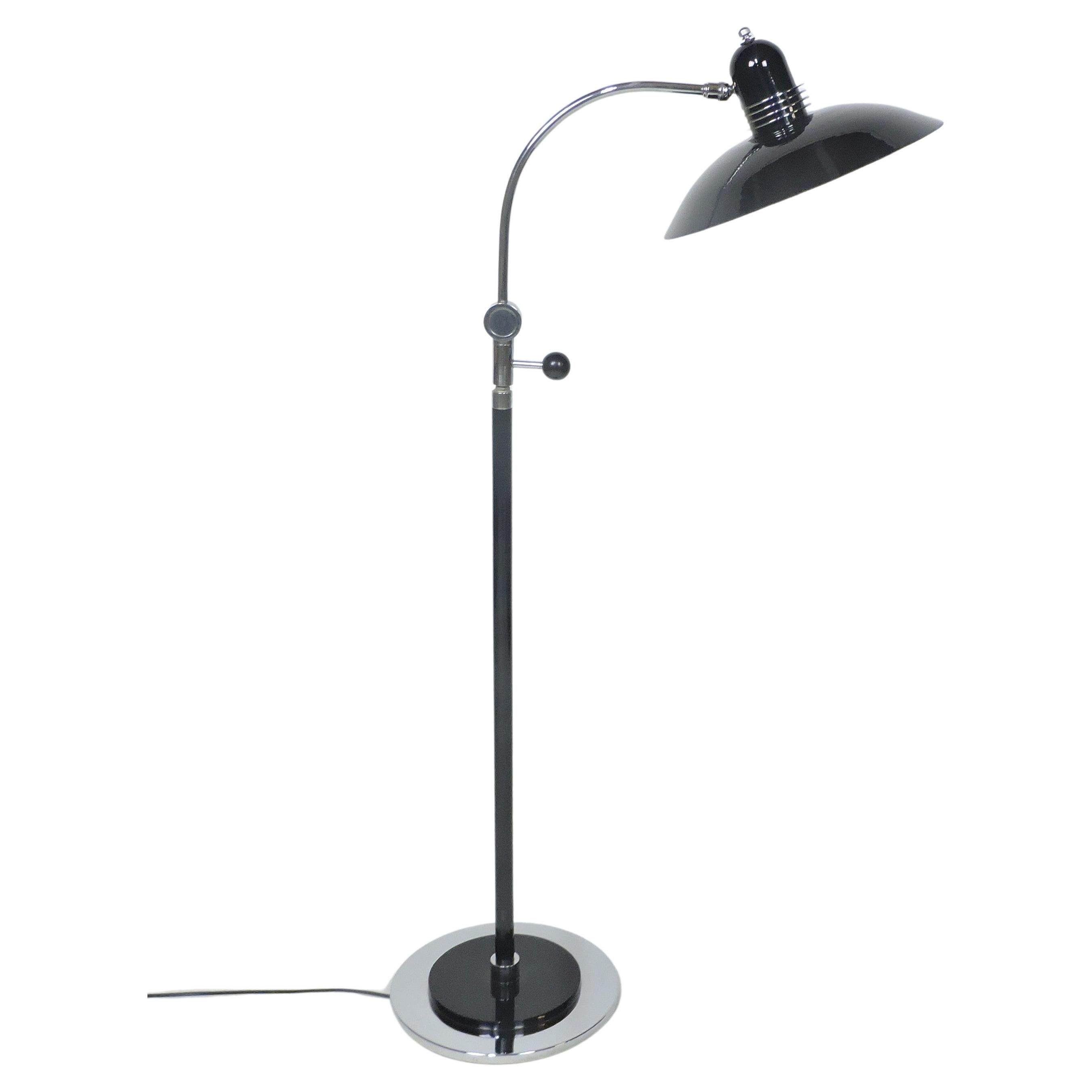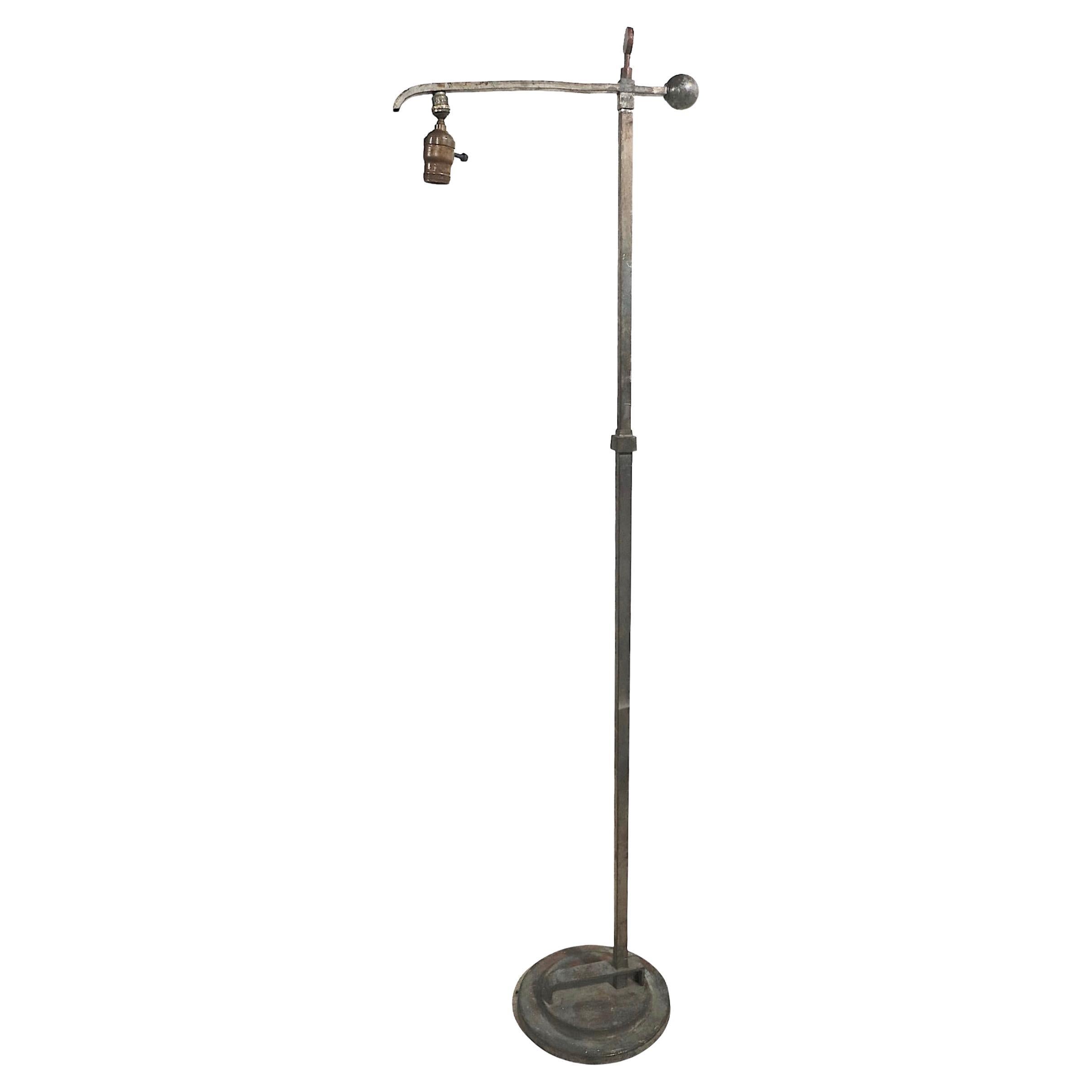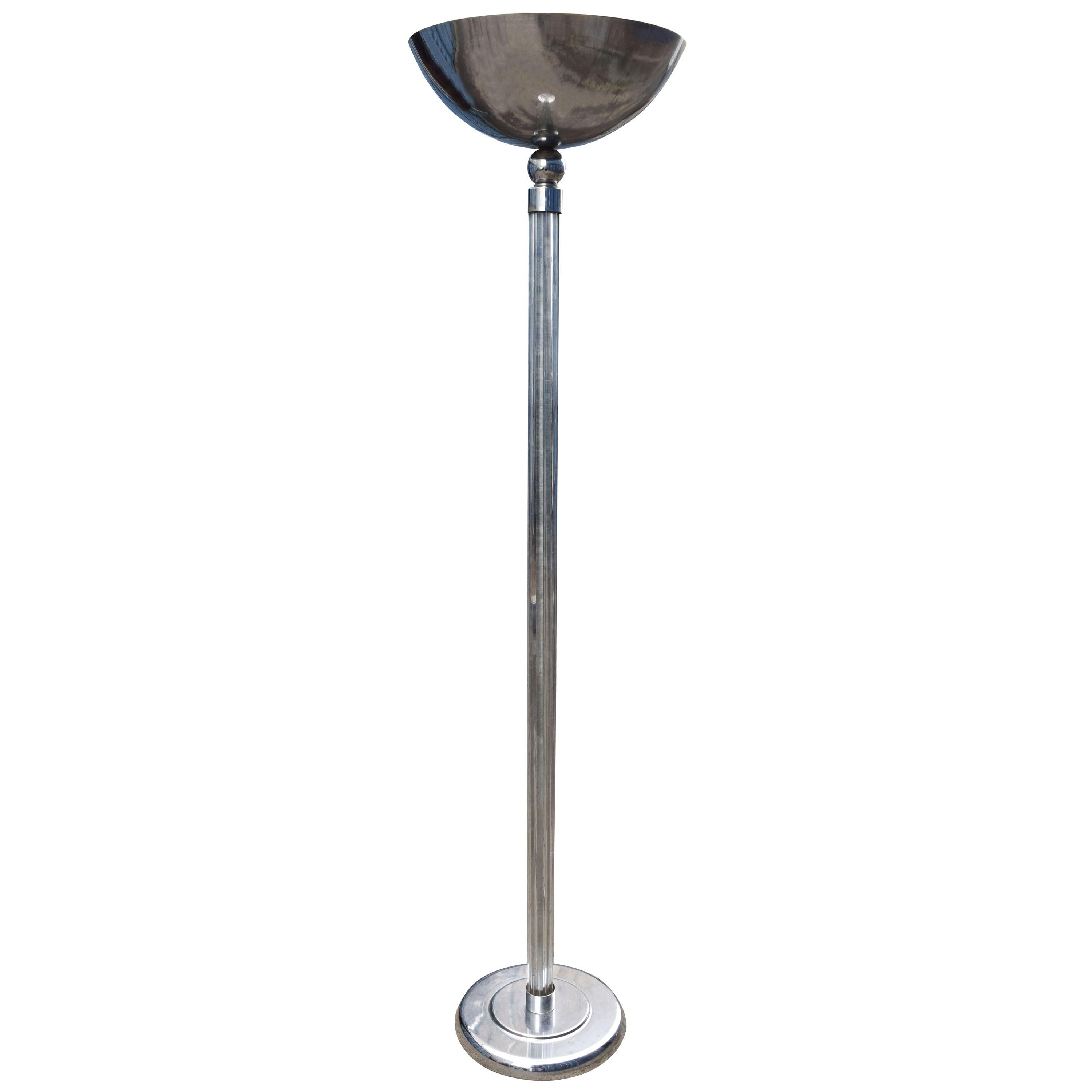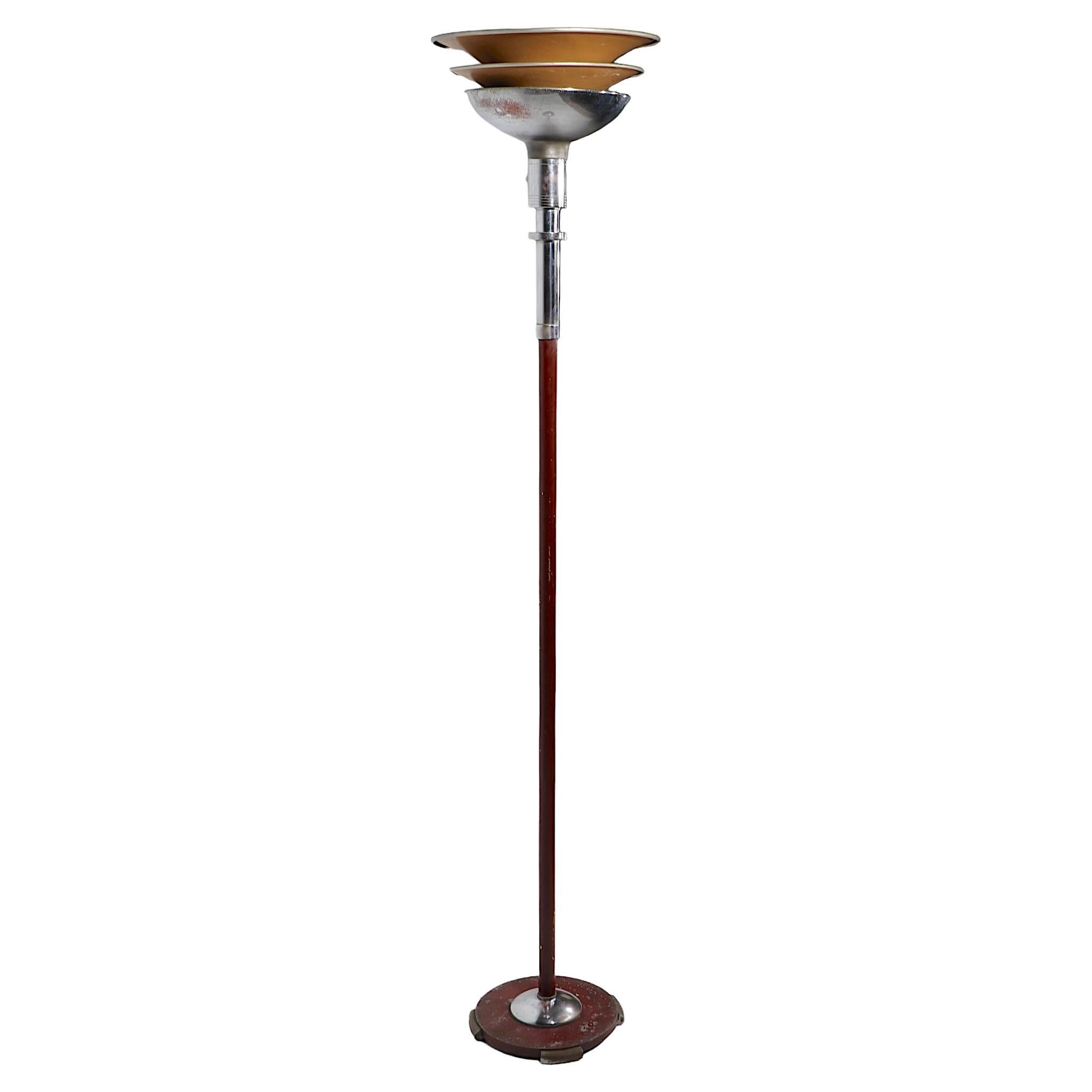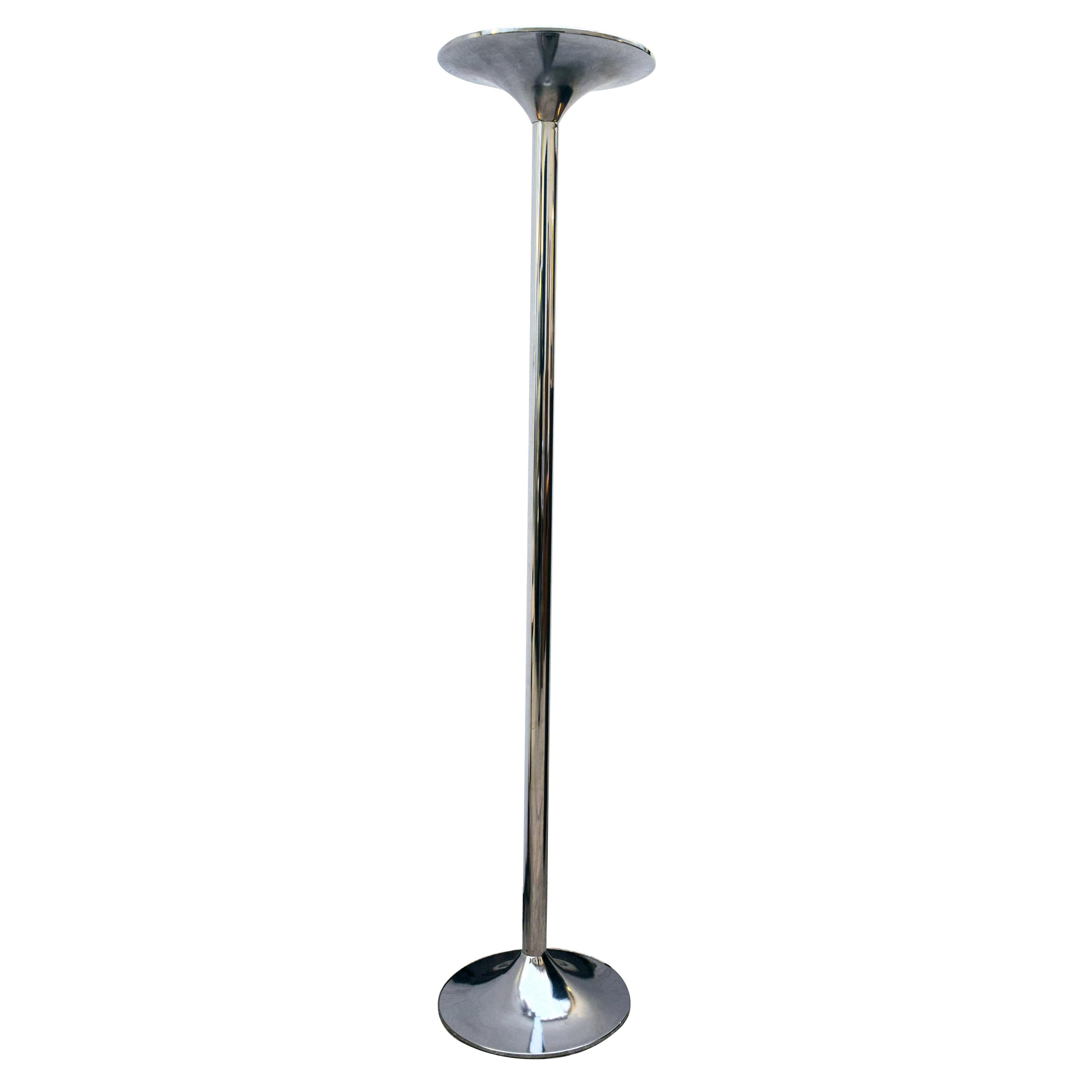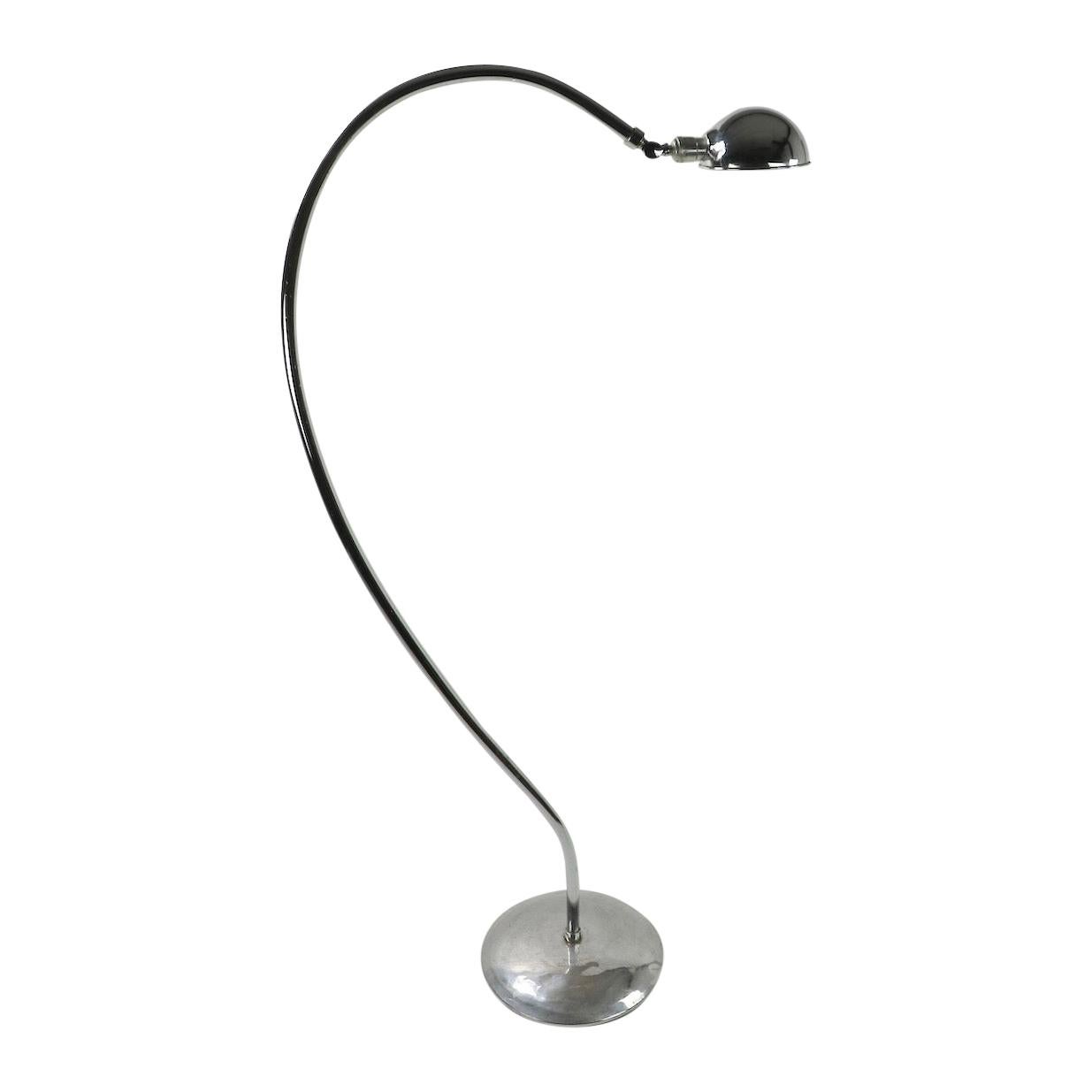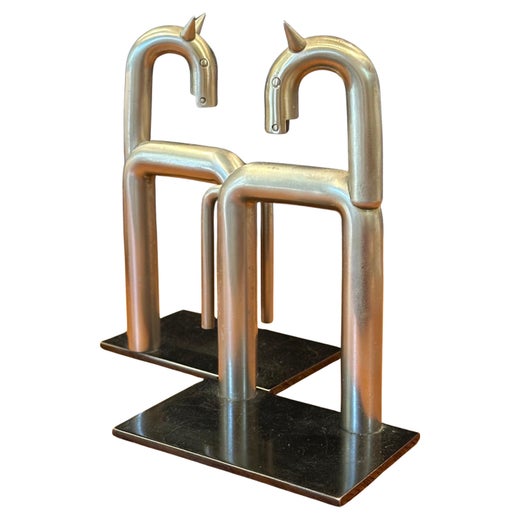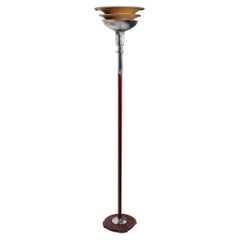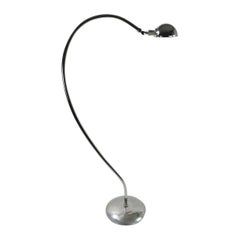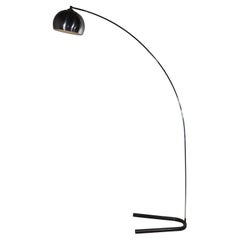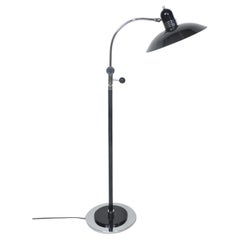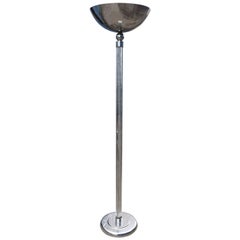Art Deco Machine Age Chrome and Black Torchiere Uplight Floor Lamp, Ca. 1930's
About the Item
- Creator:Walter Von Nessen (Designer),Gilbert Rohde (Designer)
- Dimensions:Height: 67 in (170.18 cm)Width: 10 in (25.4 cm)Depth: 10 in (25.4 cm)
- Style:Art Deco (Of the Period)
- Materials and Techniques:
- Place of Origin:
- Period:
- Date of Manufacture:1930s
- Condition:Wear consistent with age and use. Original, clean, working condition, finish shows minor wear, normal and consistent with age.
- Seller Location:New York, NY
- Reference Number:1stDibs: LU978728359482
Walter Von Nessen
Art Deco industrial designer Walter von Nessen is best known for his glamorous Machine Age lighting designs and for his invention of the swing-arm lamp. Von Nessen was born in Germany, where he studied under Bruno Paul at Berlin’s Kunstgewerbeschule. After World War I, he worked for the architect Peter Behrens, in Berlin. He left in 1919 for Stockholm, where he designed furniture until emigrating with his wife, Margaretta, to the United States in 1923. In 1927, the couple opened Nessen Studios in Manhattan, designing and selling sleek, modern architectural lighting.
Art Deco was both novel and exciting in the late 1920s — as, indeed, was electricity itself — and Nessen Studios was at the forefront of the movement. Electric lighting designers at the time had no direct models to follow. The shapes and silhouettes of gas lamps, lanterns and chandeliers had been influenced by those of the kerosene-, oil- and candle-lit fixtures that preceded them, which in turn were informed by the fuels they used. Electric lighting required designs that accommodated essentials of the new technology, like cords and sockets. Von Nessen and his contemporaries thus had to create fixtures that addressed these challenges and looked modern without appearing overly mechanical.
Along with industrial-design visionaries of the period like Raymond Loewy, Gilbert Rohde and Donald Deskey, von Nessen crafted a style that was emblematic of the Machine Age. He produced lamps and home accessories from spun aluminum, with smooth surfaces that evoked the polished gleam of streamlined automobiles and airplanes. And he experimented with other popular materials of the era, such as Bakelite, chrome and fiberglass. His ingenious design for the now-ubiquitous swing-arm lamp earned him a reputation as an innovator.
Von Nessen’s work is represented in the collections of the Museum of Modern Art and the Cooper Hewitt Smithsonian National Design Museum, among other institutions. Designed to complement the luxurious interiors of the 1920s and ‘30s, still look fresh nearly a century later.
Gilbert Rohde
Pioneering self-taught industrial designer, writer and teacher Gilbert Rohde helped define the earliest phase of modernism in the United States. He is one of the most influential figures of 20th-century design and is credited with helping legendary mid-century modern furniture manufacturer Herman Miller avert financial disaster during the Great Depression.
Born in New York City, Rohde studied painting at the Art Students League after high school. He found lucrative employment, first as a political cartoonist and then as a catalog illustrator for American department stores. He was particularly enthralled with drawing furnished interiors.
Rohde began to design furniture in his spare time. He traveled to the Bauhaus school in Germany and the International Exhibition of Modern Decorative and Industrial Arts in Paris, and drew on the Art Deco movement and the work of designers such as Émile-Jacques Ruhlmann in his early pieces. Rohde opened his own studio in 1929 and secured private and commercial commissions. His clients would come to include formidable furniture makers Heywood-Wakefield and Troy Sunshade, and his innovative bentwood furnishings for them were practical and intended for the modern consumer.
In 1930, Rohde met Herman Miller founder D.J. De Pree in the company’s Michigan showroom during a business trip. By then, Rohde had a long list of prominent clients and his furniture had been exhibited in museums and galleries. Herman Miller was weathering a devastating slowdown in business, and the American furniture industry had generally been hit hard by the Great Depression.
Rohde boldly informed De Pree that the brand’s furniture had become outdated, which was part of the reason the company was in financial jeopardy. Homes had become smaller and could no longer accommodate the large Gothic– and Victorian–style furnishings and traditional reproductions of period bedroom suites that Herman Miller was offering at the time, Rohde explained.
Rohde secured a contract to design for the Michigan manufacturer. He championed the use of exotic woods and tubular steel, and created streamlined, unadorned bedroom furniture for Herman Miller — collections that included convenient vanities, which were unconventional pieces for De Pree’s company back then.
In 1933, Rohde oversaw the design of two bedrooms featuring sleek Herman Miller furniture — including innovative storage pieces he designed — as part of an International–style exhibit at the 1933 Chicago World’s Fair. The installation garnered acclaim for De Pree’s brand all over the world and afforded Rohde the opportunity to execute on his visionary ideas in front of a global audience. Rohde later designed lighting, seating and more for Herman Miller and was extensively involved in the company's marketing strategy and other areas of the business.
In 1942, Herman Miller, anticipating a postwar economic boom, began to produce office furniture for the first time, but its legacy is in the home. Working with legendary designers such as Ray and Charles Eames, Isamu Noguchi and Alexander Girard, the manufacturer fostered some of the boldest expressions of what we now call mid-century modern style.
Find vintage Gilbert Rohde coffee tables, lounge chairs, table lamps and other items on 1stDibs.
- ShippingRetrieving quote...Shipping from: Albany, NY
- Return Policy
More From This Seller
View AllVintage 1930s American Art Deco Floor Lamps
Chrome
Vintage 1930s American Art Deco Floor Lamps
Steel, Chrome
Mid-20th Century American Machine Age Floor Lamps
Chrome
Mid-20th Century Italian Mid-Century Modern Floor Lamps
Steel, Chrome
Mid-20th Century American Art Deco Coat Racks and Stands
Chrome
Mid-20th Century American Mid-Century Modern Floor Lamps
Metal, Chrome
You May Also Like
Vintage 1930s American Art Deco Floor Lamps
Enamel, Chrome, Metal
Mid-20th Century English Art Deco Floor Lamps
Chrome
Mid-20th Century English Art Deco Floor Lamps
Chrome
Vintage 1980s American Art Deco Floor Lamps
Aluminum, Steel
Vintage 1930s French Art Deco Floor Lamps
Brass
Mid-20th Century English Art Deco Floor Lamps
Aluminum
